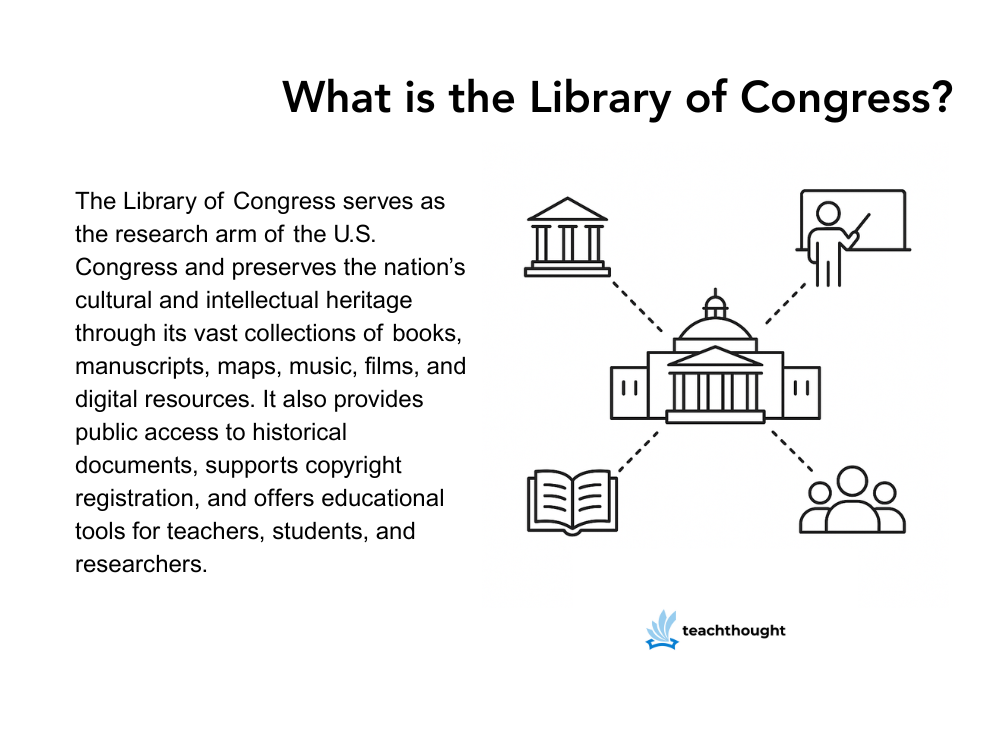

What is the congress library?
by Staff
The recent dismissal of Dr. Carla Hayden, the 14th Librarian of the Congress, drew renewed attention to the Congress Library-but what is the Congress Library, and why is it important?
The congress librarian directs the institution and is appointed at 10 years old. Hayden, who held the role until May 2025, was a notable figure in the history of the loc. She was the first woman and the first African American to lead the institution, and her mandate focused on:
- Expand digital access to collections.
- Increase in public awareness and education.
- Promote equity and inclusion in library services.
Its sudden withdrawal by the Trump administration has raised concerns among educators, librarians and civic defenders of the independence of institutions such as the Congress Library.
You can read their full statement here.
What is the Library of the United States Congress doing?
Although the headlines have focused on the political implications of its dismissal – which are worth their own examination for news and the media of journalism – this moment offers the opportunity to better understand one of the most important public institutions in the United States, which plays a calm but important role in education.
See also What is a KWL graphic?
The Congress Library serves as a research branch of the American Congress and preserves the cultural and intellectual heritage of the nation through its vast collections of books, manuscripts, cards, music, films and digital resources. It also provides public access to historical documents, supports registration for copyright and offers educational tools for teachers, students and researchers.
It is the largest library in the world, which houses more than 170 million articles, including books, manuscripts, photographs, maps, sound recordings and films. It serves several roles:
- Research arm of the American Congress: Its main mission is to provide research and analyzes to Congress members and their staff.
- National memory curator: It houses historically important documents, including draft of the declaration of independence and the Gutenberg Bible.
- Public educational resource: A large part of its collection is available online, providing free access to rare materials, primary sources and lessons for teachers and students.
- Cultural institution: It organizes exhibitions, concerts and public events and supports the registration and protection of copyright.
Examples of what the Congress Library offers
- Chronicle of America: A database available for historic American newspapers, useful for the research of students and media mastery lessons.
- National juke-box: A collection of sound recordings from the beginning of the 20th century available for listening to the public.
- The History of Veterans History Project: First -person accounts of American war veterans, organized for public and educational use.
- Main source sets for teachers: Organized documents linked to curriculum subjects, including civil rights, immigration and expansion to the west.
Congress educational resources library
- LOC.GOV: The official website, with access available to digital collections.
- Congress Library for teachers: class resources, primary sources and professional development tools.
- Copyright.gov: managed by the Copyright Office, which is part of the loc.
- Analysis of graphic organizers of primary sources – downloadable tools that guide students through observation, reflection and question of primary sources by format (photos, cards, recordings, etc.).
- The Rosa Parks newspapers – a digitized archive of Rosa Parks’s writings, letters and personal notes, offering an authentic vision of her life and her activism.
- War experimentation – New Fighter History Project – first -person stories of American veterans organized by theme, useful for teaching military history and civic engagement.
- Voix from the Dust Bowl – Audio recordings and photographs documenting life in California migrant work camps in the early 1940s.
- Collection of civil war cards – Historical cards of troop movements, battlefields and fields, useful for visualizing geography and civil war strategy.
- Chronicling America – A collection available for Historical American newspapers from 1789 to 1963, ideal for the analysis of primary sources and the investigation projects led by students.
- Do you want these in a downloadable or stylized format for an easy copy in your blog?



